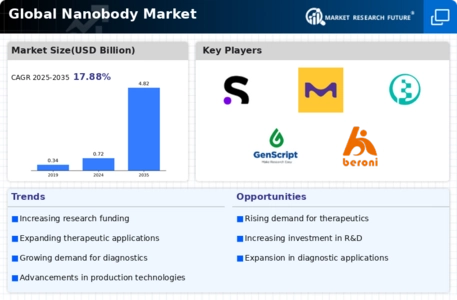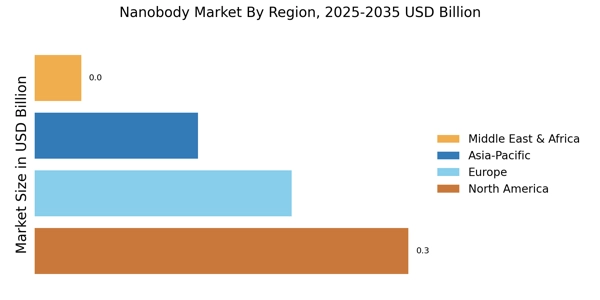The Nanobody Market is characterized by the presence of many global, regional, and local vendors. Developments in the healthcare industry and growing research and development make the nanobody market lucrative. To expand their reach and optimize their operational costs, the major players focus on obtaining regulatory authorizations from government agencies for their products and emphasize acquisitions and product launches to gain a substantial market share. The market comprises tier-1, tier-2, and local players. The tier-1 and tier-2 players have reach across the globe with diverse product portfolios.
Companies such as Sanofi (France), Merck KGaA (Germany), BIOCYTOGEN (US), and Proteintech Group, Inc (US) dominate the Nanobody Market due to product differentiation, financial stability, strategic developments, and diversified regional presence. The players are focused on investing in research and development. Furthermore, they adopt strategic growth initiatives, such as expansion, product launches, joint ventures, and partnerships, to strengthen their market position and capture a large customer base.
One of the primary business strategies adopted by manufacturers in the global nanobody industry to benefit clients and expand the nanobody market sector is to manufacture locally to reduce operating costs.
Merck KGaA (Germany) is a pharmaceutical company that offers a varied range of products subgrouped into three segments—healthcare, life sciences, and electronics. The company researches drugs in the areas of oncology and neurodegenerative as well as autoimmune and inflammatory diseases. The company is distributing its products in the following countries: China, India, Japan, Australia, Israel, United Arab Emirates, South Korea, Denmark, Italy, Netherlands, Spain, United Kingdom, Switzerland, Sweden, Argentina, Brazil, Canada, US, and New Zealand.
For instance, in October 2020, Merck KGaA (Germany) announced that it has entered into an out-licensing agreement with Novartis AG (Switzerland), for the development of M6495, an anti-ADAMTS5 Nanobody Market for the
potential treatment of Osteoarthritis (OA).
Also, Sanofi (France) is a multinational pharmaceutical company that manufactures pharmaceutical products. The company offers drugs, generic drugs, and food supplements and provides medical devices for cancer, cardiology, gynecology, and diabetes. Sanofi's research and development efforts are concentrated on developing combination drugs to improve the efficacy of treatments and on developing novel biologic formulations to create precision medicines. Sanofi serves customers in more than 100 countries worldwide and more than 75 manufacturing sites in 70 countries. The company has about 20 R&D facilities across Europe, Asia, and North America.


















Leave a Comment